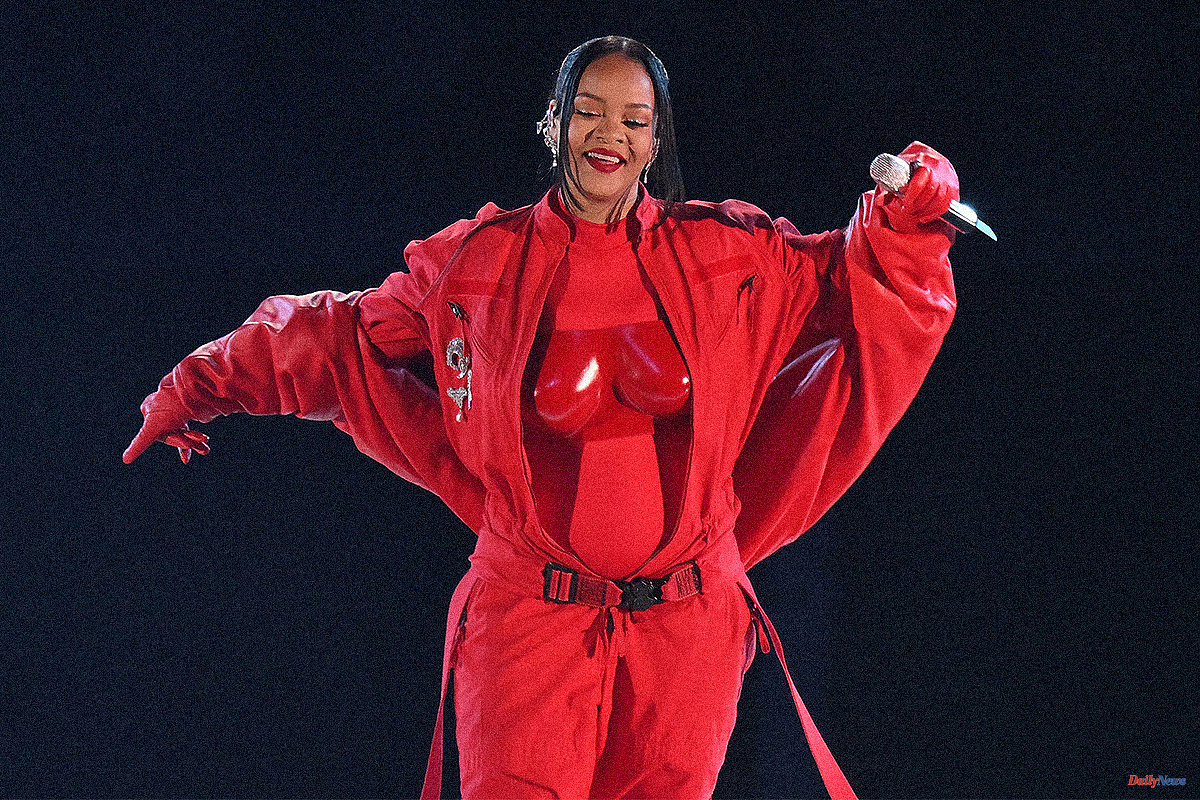To the east of Paris, next to one of the two great forests of the city, is the Château de Vincennes. It was the residence of Louis XIV, prison of Sade, the largest medieval castle in Europe. The designer Jonathan Anderson chose the royal castle as the setting for his latest Loewe show - held on Friday - so that his guests "faced the history of the place", as he recounted after the show. The same thing he felt just 10 years ago, when he landed in the Spanish house.
Anderson (Magherafelt, Northern Ireland, 1984), a baby face, hooded sweater and jeans, is responsible for the great metamorphosis of Spanish luxury. In a decade, it has managed to radically modernize Loewe's image, quadruple its revenue (456 million in 2021, especially in Asia), enter the US market and make it one of the top five brands of the LVMH group, owner of Louis Vuitton. or Dior. From hanging on the arm of the ladies of the Salamanca neighborhood to dressing Zendaya, Brad Pitt or, touchdown!, Rihanna in the last Super Bowl.
"He is a visionary. He is turning Loewe into the new luxury brand”, explains Susana Campuzano, CEO of the Luxury Advise consultancy and director of luxury programs at IE.
When I arrived I wanted to revive the attention for crafts. We create pieces by hand with history but very modern
When Anderson landed at Loewe, the house was struggling to renew its image, extremely outdated despite the great fame of its leather goods. LVMH had been trying to modernize it since 1996 - when it bought the firm from the Loewe family, but neither Narciso Rodríguez nor Stuart Vevers (Anderson's predecessors) had succeeded. «He was a benchmark for know-how and quality, especially in accessories, but with zero relevance in the contemporary. Loewe's last 10 years have been worth studying, a radical proposition, with a creative director allowed to innovate and experiment. The bet was risky, but it has managed to put Loewe in the spotlight of the global luxury consumer," says Eduardo Sánchez, director of the IED Madrid Fashion School.
Of course, not everyone applauds the turn: «Anderson does the same thing that he could be doing in another brand. For me, Loewe has lost the essence that it once had. I lack the Spanish heritage," says Inmaculada Urrea, a fashion specialist and brand consultant.
The truth is that Anderson was clear from the beginning that his inspiration was "now." The way of looking at his firm had more to do with his mastery with skin -on Friday we saw numerous examples again- than with the past. This is how he explains it to PAPEL: «The origins of the house as an artisan workshop are deeply important to its identity, so when I came to Loewe I wanted to revive the attention for crafts. By using this combination of knowledge, technique and heritage we are creating handmade pieces anchored in history, but also very modern." He was so fascinated by the country's mastery that today even the bags of his own brand, JW Anderson, are made in Spain.
His landing at Loewe was more leisurely than the crazy rhythms of current fashion are used to. "LVMH has let me explore at the pace I wanted," she told this journalist in 2015. Almost a year after her arrival, she presented her first collection (for men, as she had already done with JW Anderson), changed the logo, and redesigned the house's two best-selling bags (Amazona and Flamenco). In 2015, she would create her first bag (Puzzle), best seller since then.
Sánchez and Campuzano agree that the Puzzle "is the best example of the way in which Anderson has approached the heritage of the house," according to the former. «Before, Loewe was much more aristocratic, everything was impeccable. So, in luxury, the brand image prevailed over being useful. The Puzzle is luxury, but functional: you can carry it in different ways -it even has a shoulder strap, something Anderson dared to add to the Amazon as well- and it can be used by a man or a woman. Everything that Anderson launches is for a consumer who uses luxury as something functional”, says Campuzano.
Luxury is no longer something you keep for a lifetime and is inherited by your children
This is, in effect, the new buyer in this market: increasingly younger and not necessarily ultra-rich. «Before, luxury was quality, materials and exclusivity; now it is something experiential and conceptual for a younger consumer, who considers that the brand is part of their way of seeing the world”, says Sánchez. «Today it is no longer about showing status, but about reinforcing an identity with taste. You no longer seek to differentiate yourself socially, but rather pleasure, be it aesthetic or cultural”, agrees Campuzano.
That pleasure can simply be in owning the magazines from the Loewe collections, a candle, or even a bag that the millennial buys with his first bonus. The new ways of approaching what once were exclusive products (second-hand, outlets, rentals, buying today to resell tomorrow...) have done the rest. "Luxury is no longer something you keep for a lifetime and your children inherit it," adds this expert.
This new customer also has another way of buying that the brand has been able to see. Thus, Loewe has opted for a more modern distribution by entering multi-brand websites such as Net-A-Porter and concept stores, while at the same time changing the philosophy of its own stores. In the past, the distant staff seemed to give value and exclusivity to the premises. Today, in the Loewe houses - where you can see everything from collaborations with young artists to ceramics by Picasso or a Galician granary - the client is received by young people with a lot of character who seem to have just arrived from Ibiza (an island adored by the designer since he was a child).
Precisely, Anderson's "greatest obsession" now has to do with the shopping experience: "The online audience consumes the images of the parades so quickly that they don't care even before they arrive in the store. How do you get uniqueness for when the clothes are in the window? This is very hard for the designer. Hence her printed and blurred dresses, the feathers or the strange volumes of the last show: «I like the idea that a cardigan looks like a cardigan online [a normal garment], but that in the store it is like a sticker [with a photograph printed with folds]”. Come play, please.
And it is that Anderson is one of the designers who is most aware of business in its difficult balance with creation. This is how he explains it to this newspaper: «The focus is always on making a good product: knowing when to keep things simple and when to plug in power. But ultimately the product has to sell. I have a responsibility to Loewe: the brand has been around since 1846 and I want to make sure it lasts another 200 years." The ladies of the Salamanca neighborhood will have to get used to it.
According to the criteria of The Trust Project












